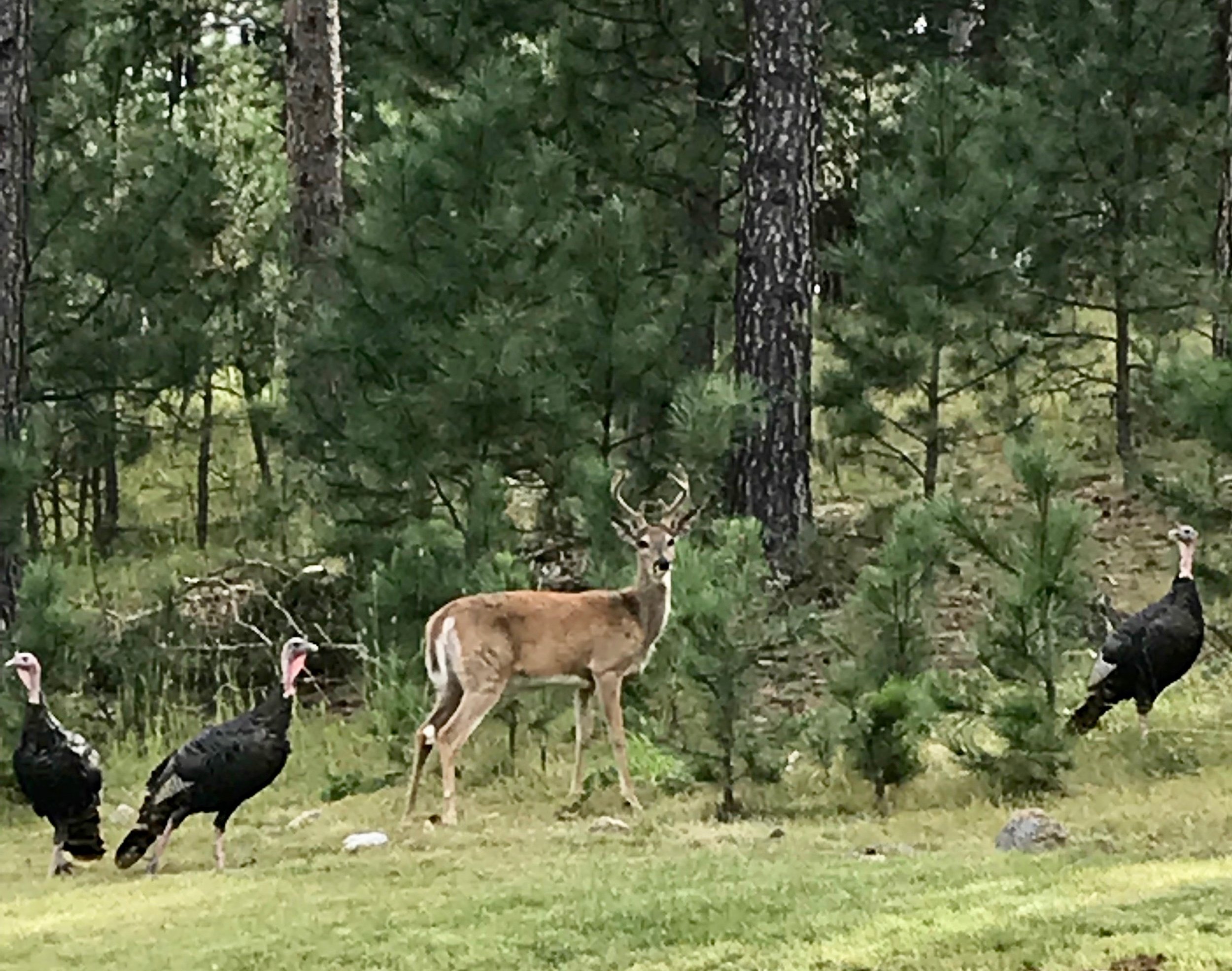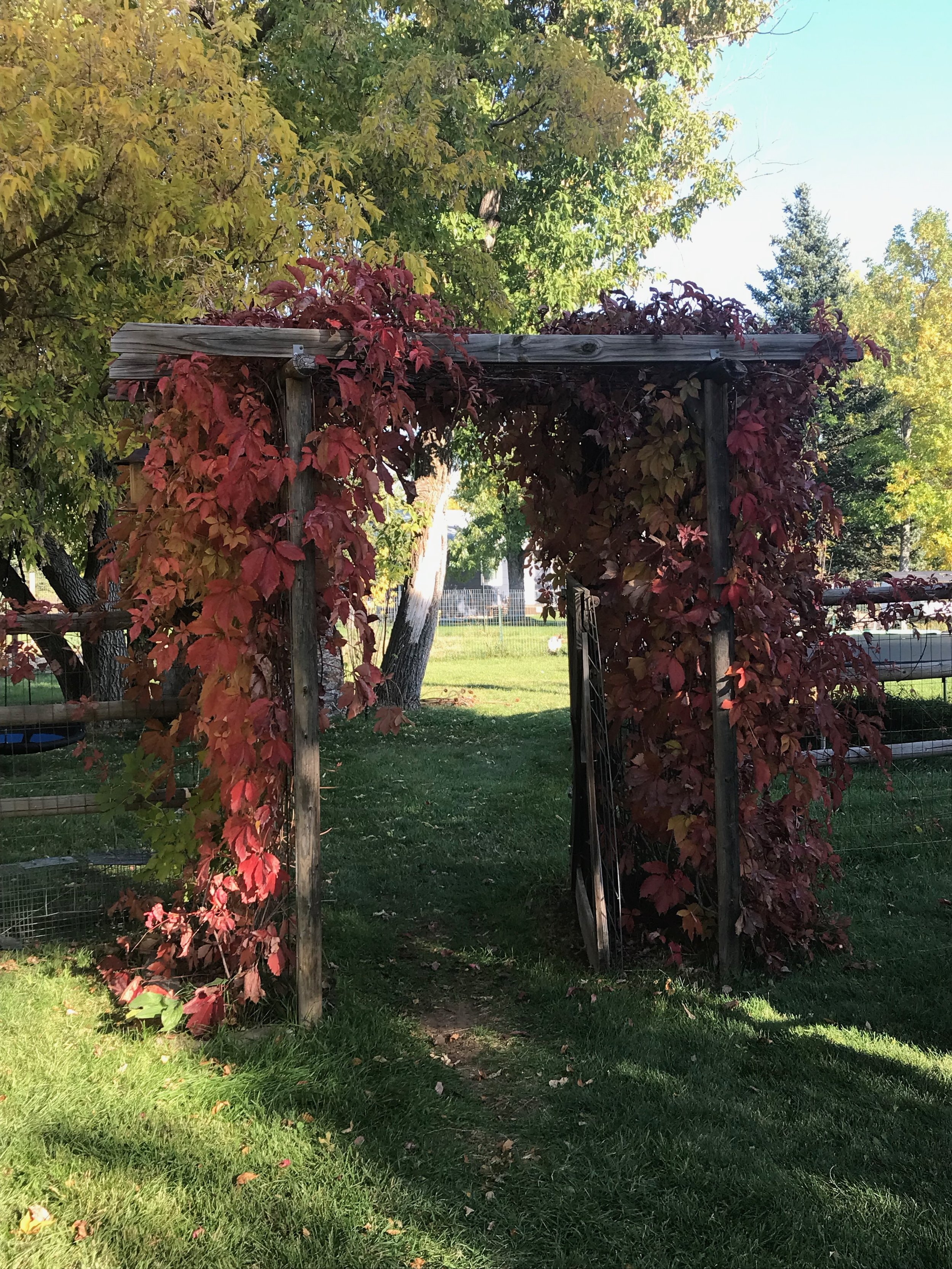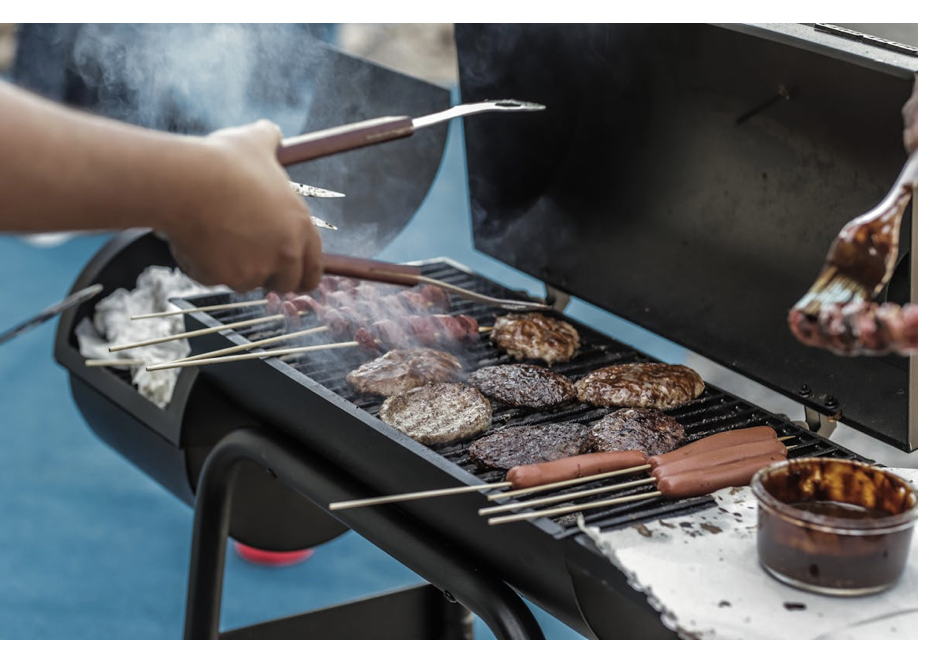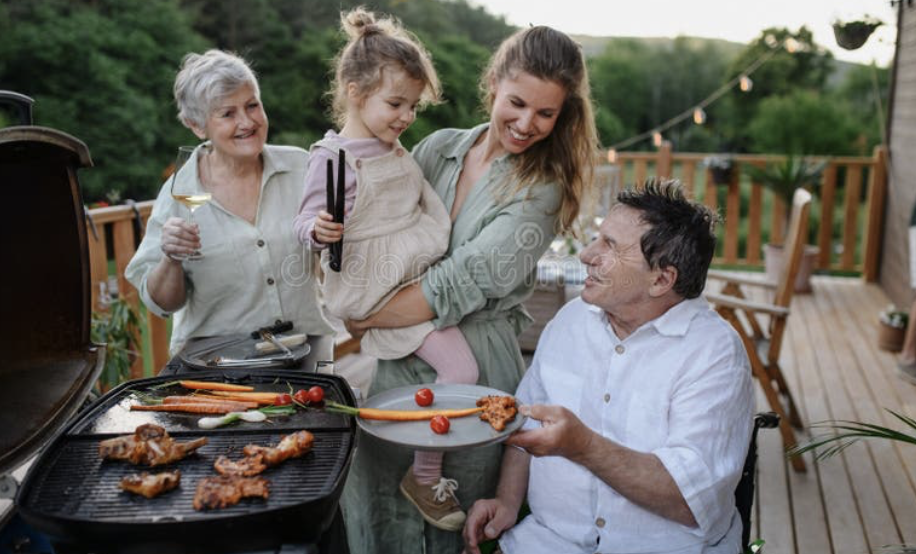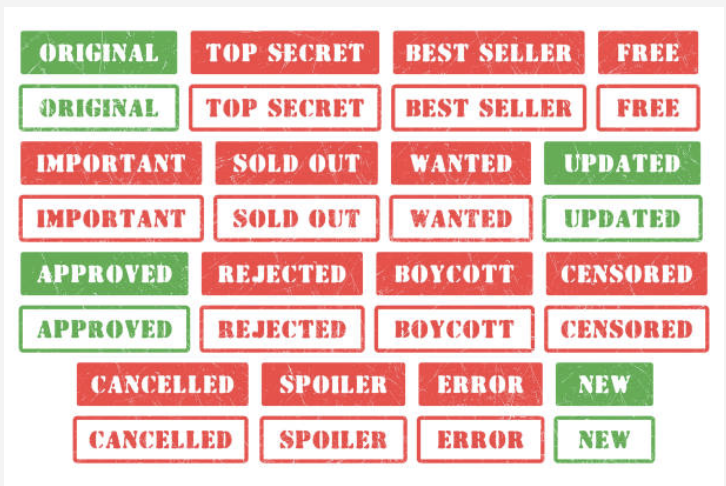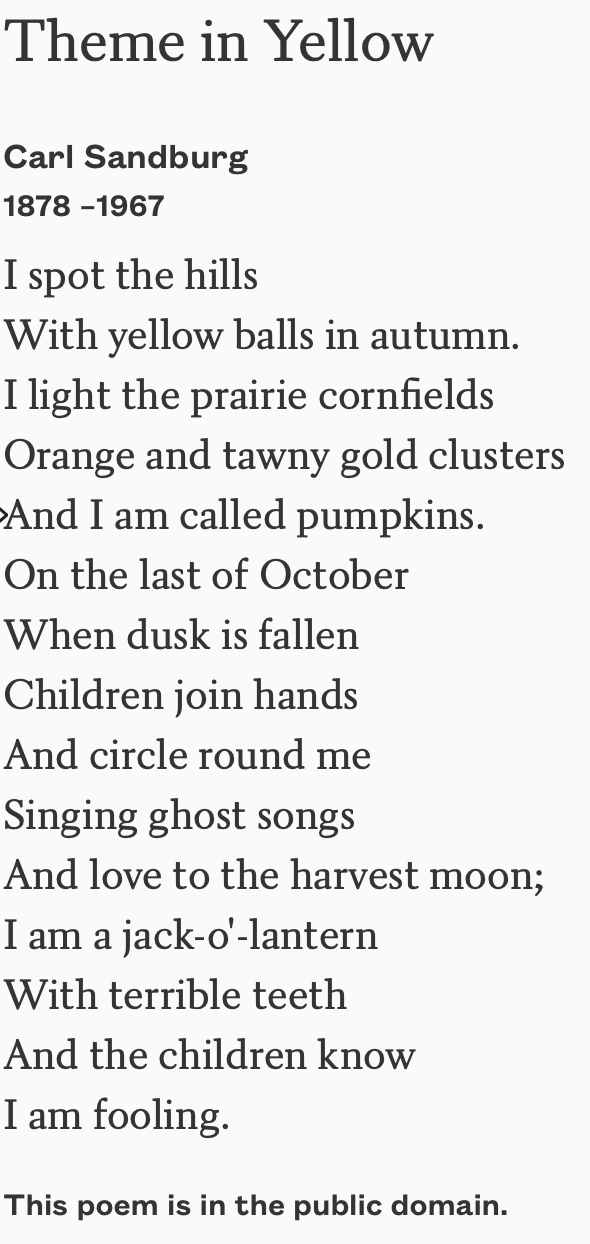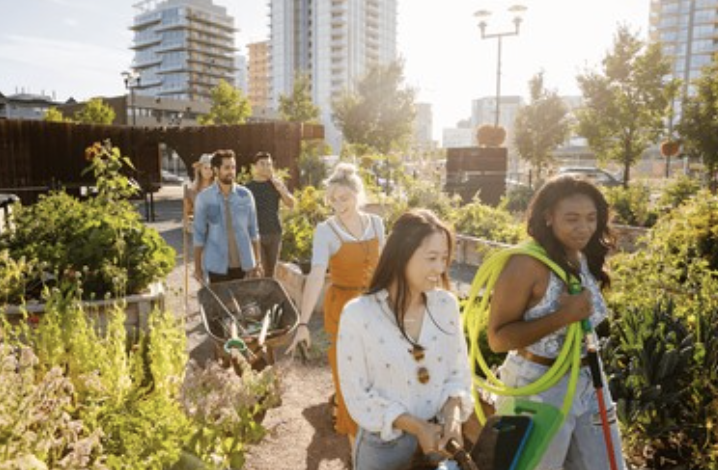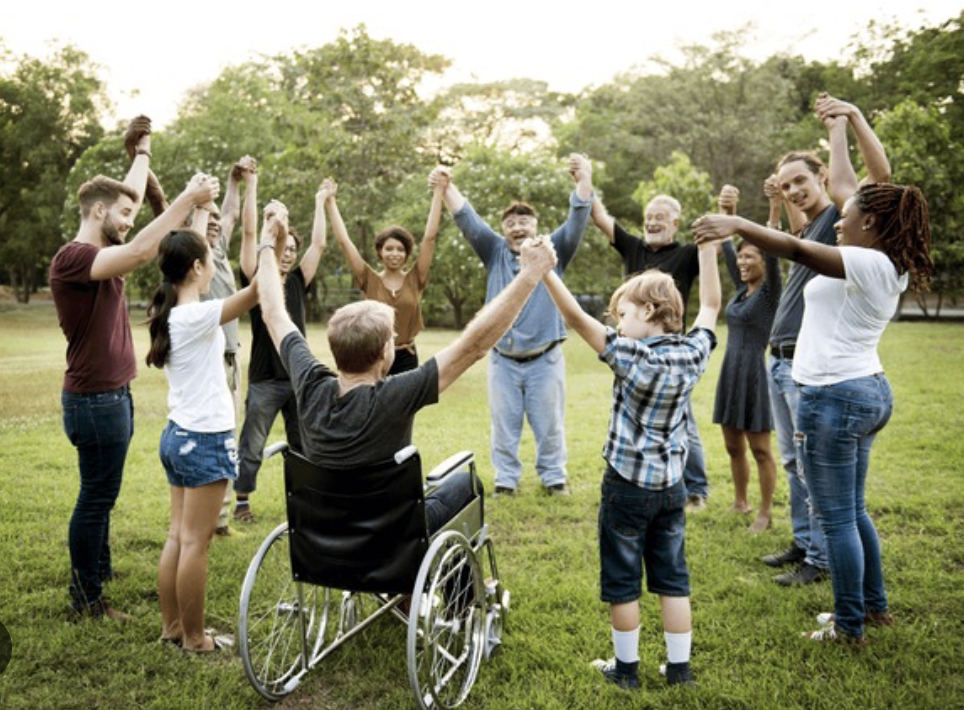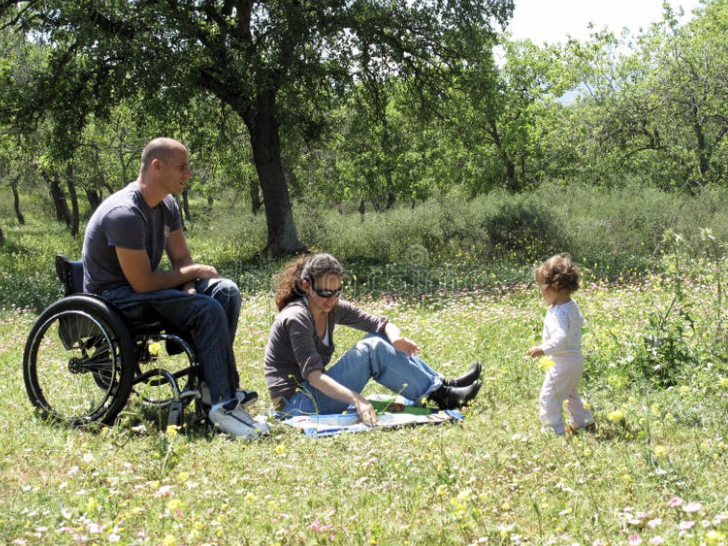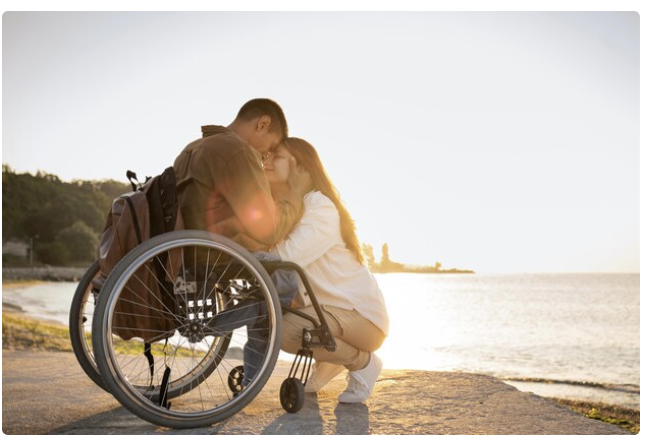Photos That Tell Stories
I love to take pictures! Whether it be animals, landscapes, children, foliage, winding roads, mountains, and a hundred other things. It takes me what seems like forever and a day to actually go through them, to edit and choose which one is best in any given set. I often end up saving several of each because I like them all, which is probably not a good practice given the amount of space so many pictures take on my computer!
Regardless of my interest in taking so many pictures, I am not anywhere close to being a professional! The light isn’t always right, nor the angle—especially since I’m short and often have the camera (or phone) looking up, and often not even the optimal background. It’s just something I enjoy doing so I can go back and look at them later to see where I was, or remember something I enjoyed at the time. And besides, the pictures I take are usually just for me, so I’m not overly concerned about the particulars that would make any a photo ‘professional’.
All that said, I am amazed when I see those outdoor photos which seem to defy gravity or are a close up of a wild animal or very intimate picture of a momma and her babies. Photos of people intrigue me as well, as expressions can be so powerful. Sometimes eyes look particularly sad, or lost; other times they twinkle with mischief, or adoration. It seems like you can see into the mindset of the person in the photo. I’m particularly in awe of people who can photo other people, and do it well, capturing their personality and the essence of their soul!
I’m one of those people who does not photograph well. I smile too big—making me look like I’m wearing a silly grin, or my eyes look half closed, or in my opinion, several other things, that make me a very unsuitable subject! While I have this less than stellar perspective about myself, there are others who also feel they should not be in pictures!
Sometimes a picture which doesn’t turn out like you like, has more to do with the way it’s taken. The disability people group have dealt with this problem for years. Many of the photos taken of them are more focused on the disability instead of the person they are! Or the opposite happens, and the effort is to not include, minimize, or attempt to alter the situation. This makes them seem unnatural, awkward, or even occasionally less than an optimal human being, without even the ability to have any kind of relationship!
It’s wonderful that there are those in the disability world who have taken on the challenge, despite their personal disability to change the perception of disabilities through their own photographs! They are working to provide photos of a life within the disability framework filled with love, and a fulfilled, rewarding life. They desire to create photos which share hopes, ambitions, desires and perhaps even a glimmer of their story.
Their goal is to look past the disability—but not ignore it, and expose their joy, love of life, personality, abilities and a life well lived! These kinds of photos demonstrate it’s not about what you cannot do, but about what you can; both behind the camera, as well as, in front of it! It’s all about attitude.
Life can be challenging for everyone, and usually is in some form. But promoting positivity is a powerful tool for everyone who shares in not only the problem but some of the solution! It’s inspiring and motivating when we can look past ourselves and see the potential in someone else. These moments of clarity can help each of us look inside ourselves and help us move forward, even when there are barriers we hadn’t counted on, or obstacles we had no choice in.
As you grab your camera and snap those photos that mean something to you, remember that photos have a way of telling stories we can only imagine. Share your photos when you can, because sometimes a person only arrives in this particular ‘space’ through a photograph, which can bring understanding, joy, or a sensation of being in someone else’s ‘shoes’.
Courage to Have Hope
I am an eternal optimist. I look at my cup as half-full instead of half-empty. I have dreams and expectations for the journey I chose, even when there seems to be only a glimmer of ‘success’ in the societal perspective. What’s really important is that I feel like I’m making a difference and ‘paying it forward’.
Graduation just happened for many students across the country. They have dreams and plans of a life to be lived to the fullest. Some will go to college, others to work, and some haven’t a clue yet, what they want to do. Yet, most of them will remain optimistic and filled with the hope they will find their place in society within usually a year or so—and perhaps even sooner.
There are those in our communities, however, who struggle to keep their hope alive. Life has not been kind and they want nothing more than a day without pain, scars, humiliation, and self-image completely depleted, because of a disability, over which they have no control.
Fear and a deep feeling of hopelessness sometimes grips people so much they choose to give up, instead of moving forward. It’s easy for most of us to have a decent measure of hope, even if we fail to really think about it. Our complete functionality is apparent and our minds work with amazing success—albeit at different levels, with family who love us and often, reasonably good health.
Caregivers of this ‘people group’ fight for their children (or spouses) to have ‘good days’ with medical teams helping them maintain a precarious sense of balance. Depression, diabetes, cancers of all descriptions, taunting, and self doubt cloud even those days which seem productive. But even they, fight the battles of depression and loss of hope when they see their loved one struggle, while the medical community seemingly, often lets them down, when no answers come.
Add to this the local community who looks the other way, and refuses to accommodate those with disabilities in terms of a transportation need, business accessibility, general seclusion, low tolerance, and disparities or denial of the same rights many of their non-disabled peers enjoy.
Even with all these drawbacks and hurdles, it’s so encouraging to watch these often battered human beings clinging to the hope that one day they will be successful and rise above the din of noise that beats them down!
Laws have been set in place to remedy some of the situations of discrimination many persons with disability have. But there is still much to be done. Awareness of the level of discrimination and what we as a community could do to aid in tolerance and inclusion, for these special people, would be amazing. But, it takes work and not everyone is willing. In fact many aren’t even interested!
If we as a nation would rally around those who fight these kinds of battles every single day, can you imagine the impact we could make? Kindness in any form is an immeasurable confidence builder for anyone—regardless of ability!
In your daily outings, whether at work, shopping, vacationing or doing something else, should you encounter someone with a disability, be kind. Be genuine and respond to them as a neighbor or friend. Your kindness could impact them in ways you could never imagine.
Vacation—Here We Come
Vacations are magical, adventurous, exciting, relaxing, family time, educational, and many more adjectives which makes it a ‘must’ for everyone.
Most of us have favorite places we like to visit. Our family (including all five children) can say they have been to all 48 of the contingent United States. Granted our youngest was young enough he has only pictures to prove he was there, rather than a specific memory. But he’s visited many of those same places since he’s become an adult with his own family. Our favorite place to visit, however, has always been the Black Hills of South Dakota.
I remember years ago we took my mother-in-law with us on an extended vacation. It was interesting accommodating her needs, which were much different than our children or even my husband and mine. We were anxious to walk along side the Grand Canyon with our children. The colors were stunning as the sunlight caught the different layers of the canyon making them look like they were rippling. There were times, however, when depending on how you looked at it, it felt like you were spinning, falling, or at least walking wrong. To a point, it was eerie.
My mom-in-law, however, chose to not go with us on this outing. She was content to sit on the bench. Her legs, and particularly her knees which often gave her great pain, wouldn’t have been able to make the trek. There were other instances where accommodations needed to be made because of her navigational abilities.
This kind of circumstance isn’t anything new in the world of disabilities, when vacationing or trying to travel. Challenges abound from start to finish whether it’s regarding a wheel chair requiring navigation, eateries which aren’t always helpful to folks with special needs, nor are other vacationers who choose to not be bothered with giving assistance when they could, or so busy with their own plans, even waiting on someone with a disability makes them cranky—and unkind.
Some with disabilities, because of these barriers, choose another method of traveling! There are travel experts available to make the journey much more satisfactory! They not only provide destination ideas, but have the tools to make your dream vacation happen! They make sure, where you are traveling, can accommodate wheelchairs and other necessary elements, work for their guests.
There are inclusive travel companies for those who have intellectual or development disabilities, as well. Some are non profit and offer amenities that go well beyond expectations. Ideas include vacations to balloon festivals, cruises, theater shows, even to offering guided tours to places like London, Hawaii and other places.
There is still much to be aware of when traveling with someone who has a disability. A priority is making sure medications are up to date and none forgotten. Any doctor instructions should be written down (or printed) to help give aid if necessary. A food substitution list should be available (perhaps non-perishables even included when packing) and all things medical should be carefully thought through.
Regardless of ability or lack of, planning is necessary. But travel and vacations are such a joy and provide opportunities beyond our front door, town, perhaps even our own cultures. Choose to grab your camera, journal for note taking, and other required elements, along with your loved one, regardless of ability, and venture into a place of magic, adventure and family.
Witness and share their excitement as you and all participants explore, taste the life of another culture, experience the oceans or the grandeur of the mountains. Whatever the dream, grab it and make marvelous, lasting memories!
#vacationIdeas #disabiltyVacations #LetsTravel #DisabiltyAndTravel #experienceTravel #mountains #oceans #explore
#FamilyTime #MakeMemories #TravelExperts #TravelCompanies #VacationIdeas #FamilyTogetherness #TimeForFun
Changing The Trajectory Of Graduation
School is ending for the summer soon, and classes across the nation are graduating! What a wonderful time for families and friends to celebrate the hard work and energies spent by these young people preparing to begin a new season in their life!
Our family has three grandchildren graduating this year; and I am going to celebrate with many of my other classmates, our 50th class reunion, in just another two weeks! It doesn’t seem possible that so many years have passed…or that so many of our classmates have stayed in touch all this time!
Graduation Rates Are Climbing — For Some
Statistics show that graduation rates are climbing in the U.S. That’s a good thing! Still for all the celebratory activities going on, there are those who have done their best to achieve the accolades of a graduation diploma, but fall short.
All Children Can Learn
Those with disabilities, have barriers set, that reach beyond their abilities. First and foremost, all children can learn. Some learn differently or more slowly than their peers. That’s fine. It’s no different than the child who is labeled a ‘genius’. He too, learns differently than his peers. But data also shows that most students who have a disability are capable of graduating with their peers. However, most do not.
Is The Education System Failing Disability Students?
There are strong indicators that our education system is failing disability students. It undoubtedly isn’t deliberate, but it still remains. Some parents even believe, given the current state of affairs, their child’s education in ‘special services’ was a waste. Others believe their schools don’t give their students the credit they deserve; and that their child is capable of far more than the school authorities expect.
Mainstreaming Helps Success
There are ways to circumvent the educational status of disability students, lack of graduating statistics. There are great indicators of success, when a child with disabilities is mainstreamed into a classroom. Sadly, however, many teachers are not trained to help these children succeed.
Raise Expectations
Many believe expectations need to be raised. Depending on the severity of the disability, these children need to be challenged to the best of their abilities! They still may not learn as quickly or clearly as their peers, but when they are challenged, the bar is raised, and have a chance of increasing their success.
Capitalize On Their Strengths
Support teams and efforts to capitalize on the strengths of the child with disabilities, is also a consideration. As the teams work with students, identify their strengths and refine progress data, forward progress continues. Each student is different and understanding their needs and customizing their program will enhance growth.
Change Mindsets
Changing mindsets regarding equity for school educators, parents and students, is also a critical indicator of progress. Parents need to be involved with the educational process regarding their children. It should be a joint effort with trained teachers and administrators to assure their child receives the best education possible, given what the disability might be. Being knowledgeable and knowing how the system works, even as a student, can aid movement toward graduation.
There are many more ideas and thoughts regarding this issue. Our special needs children deserve the honor of graduating just as much as their peers. They should not believe giving up is the best option; because they ‘can’t’ get it. They can! We need to believe in them, even if they don’t believe in themselves!
#graduation #DisabilityStudentGraduation #education #BelieveInTheStudent #YesEveryoneCanLearn #LetsLearnTogether
#celebrateEducation #celebrateLearning #LearningIsForEveryone #changeMindset #PrepareTeachers #DisabilityStudentsLearn
Photo Credit: https://pikwizard.com/s/photo/education/
Photo Credit: https://stock.adobe.com/search?k=learning%20disability%20teen
Photo Credit: https://www.freepik.com/free-photos-vectors/graduation
Barbecue Success For Everyone
Who doesn’t enjoy a good ‘ole’ barbecue? There’s something about the smell of hamburgers, hotdogs or ribs wafting across the yard! Add to this a nice big bowl of potato salad, baked beans, potato chips, iced tea or other favorite beverage; topped with strawberries or other dessert and you’ve got an amazing meal. Whether you’re enjoying this meal with family or dozens of friends, the warmth of fellowship, and good times feels nothing less than perfect.
I admit, I rarely tend the grill. My husband is the ‘grand barbecuer’ and he does an amazing job. So while he’s cooking the food, I’m preparing ‘the eating space.’ One of my daughters, however, isn’t intimidated by a grill in the least. She fires that thing up and layers on the meat! So does that mean anyone can grill?
Great Cooks Are Everywhere!
The answer to that is a resounding YES! There are those with disabilities who are some of the best grillers on the planet! They may have to do their work from a wheelchair, or even with crutches under their arms, but they can cook!
While an outside grill event with lots of friends and family are around to give support and help out when needed, the disabled ‘people group’ have found other ways to enjoy the great grilling season of summer!
There are events all over the states during the summer season to raise funds for children who have disabilities. There are children (and adults) across the globe who have needs unmet due to lack of funds for medical treatment. A great meal of barbecue and all the elements that go with it is a great way to help out!
Following The Dream
But this isn’t the only way grilling has impacted the disabled. Sadly, many of those who are ‘abled’ don’t realize the tenacity and determination of a disabled person who has a dream. We all like to eat, but some are much more skilled at fixing food than others! I cook because we need to eat. Others cook because they enjoy the cooking process.
There is plenty of advice and information available for those who have limited sight, about specific tools and equipment to use, to enable them success. Others may need to help accommodate the initial outing, but success it totally possible!
Braille cookbooks are available for those who need them, and not surprisingly they do an incredible job! Once such amazing person is Harriet Smith. Her site at Harrient's Blind Kitchen offers tips for healthy eating and more!
Entrepreneur Idea
Projects like the one found at this site, indiegogo projects are incredible inspiration to anyone who wants to be an entrepreneur! Sam Farmer, who has a disability, wants nothing more than to have a mobile barbecue. What an awesome idea! Following his dream, raising funds and being an inspiration for other people in the ‘disability people group’, is incredible!
Let’s Eat!
Food and eating is a central element in all our lives. Eating is something every person does, for sheer survival, if nothing else. Someone has to cook it! Why not someone with a disability? Gifts come in all shapes and sizes! The gift of cooking doesn’t come to all, so if cooking is your gift, then yes! Go for it! Share your gift with your loved ones, and those who are going to be ‘wowed’ by your wonderful dishes and delicacies but also your natural abilities!
#familybarbecue #Let’sEat #barbecue #BarBQ #GoodFood #EatToLive #LiveToEat #Entrepreneur #GreatGrilledFood
#DisabledAndCooking #DisabledCook #FollowingTheDream #FollowYourDream #DreamingOfFood #SuccessfulGrilling
Succeeding in Business as a Parent with a Disability
Moms with disabilities have a special edge in the business world, thanks to their unique experiences and resilience. They face the dual challenge of managing a business while navigating parenting and disability. Yet, these challenges bring valuable skills and perspectives to entrepreneurship. This article from Guest Author, Clair Wentz offers guidance to help ‘mompreneurs’ with disabilities build and grow their businesses successfully.
Recognizing Unique Skills and Experiences
As a mom with a disability, your experiences offer a unique perspective in the business world. The resilience and problem-solving abilities you've honed can truly differentiate your business. Seeing your identity as a ‘mompreneur’ with a disability as a strength, can shift how you approach challenges in business. This perspective turns potential obstacles into distinctive advantages, making your business stand out in the market. Embracing this viewpoint can inspire others and highlight the value of diverse experiences in entrepreneurship.
Selecting a Business Idea Aligned with Abilities
It's important to choose a business that fits your passions, physical abilities, and schedule as a parent. Look for ideas that require minimal physical strain and offer flexible hours to accommodate your family and health. A business that’s based online or from home could provide the flexibility you need. The goal is to balance your ambition with your health and family life smoothly.
Developing a Detailed Business Plan
A well-thought-out business plan can address the unique challenges you face as a mom with a disability. This plan should include strategies for overcoming health and accessibility obstacles, alongside your business goals and financial expectations. It acts as your roadmap, guiding you through the ups and downs of business ownership. With this plan, you can stay focused on your growth and navigate your business towards success.
Digitizing Important Business Documents
Digitizing your business documents simplifies both organization and access. This not only streamlines your administrative tasks but also frees up more time for you to concentrate on expanding your business. Saving documents as PDFs ensures universal compatibility, preserves original formatting across different devices and platforms, and offers enhanced security options for sensitive information. With a PDF merger, you can combine multiple files easily, ensuring that everything from contracts to invoices is readily available at a moment's notice.
Ensuring Accessibility for Customers and Employees
Accessibility should be at the heart of your business, benefiting not just you but also your customers and any team members. By incorporating features and technologies that improve accessibility, you create an inclusive environment for everyone. This can range from an accessible website to adaptive workplace technologies. Such commitments not only build a positive reputation but also expand your customer base and attract diverse talent.
Leveraging Technology for Business Success
Technology is a powerful tool that can automate tasks and help you reach a wider audience. By embracing digital marketing and online platforms, you can market your business efficiently and connect with customers globally. Finding the right tech tools can significantly reduce your workload, giving you more time for your family and personal care. It’s all about choosing technologies that fit your business needs and making them work in your favor.
Building a Supportive Network
Having a support network is crucial for any entrepreneur, especially for ‘mompreneurs’ navigating disability and parenting. Surround yourself with people who understand your unique situation and can offer support and advice. Networking with other ‘mompreneurs’ who share similar experiences can provide invaluable insights and encouragement. Joining disability organizations and support groups can also open doors to resources and networking opportunities to help your business thrive.
Starting a business as a mom with a disability showcases incredible determination and creativity. By harnessing your unique experiences, choosing the right business model, and leveraging technology and support networks, you're well on your way to success. It’s about turning the challenges into strengths and paving a way that leads not only to business achievement but also personal fulfillment. Your unique perspective is indeed your most significant asset in the world of entrepreneurship.
Image: Freepik
A Homestead For Everyone
We have a daughter and family, who live in Wyoming on a homestead! It’s amazing! They have chickens, ducks, goats, pigs, a cow or two, turkeys, and other assorted animals. Their eight children all take a part in the care of the animals, as well as the massive garden they plant in the spring; and in preserving the bounty in the fall. It’s a huge, every day project, yet they love it.
When we visit I am always in awe of all they do. There is so much work involved, but they rarely look at it as work. The goats provide milk to drink—(and yes, goat milk is amazing,) and as it turned out, several of the children were allergic to cows milk but thrived on the goat milk. The garden has me jealous of all the bounty and cringing with embarrassment as I compare my pitiful little six item garden to their fifty-two different varieties of plants, all of which they enjoy all winter during the cold, snowy season!
I have pictures of the little ones picking up the chickens and toting them as pets, as well as the goats! They love their life and it shows!
What surprised me, however, is the suggestion that this type of lifestyle is not only for the fit, healthy and robust of us, but also for the ‘disability people group.’ It not only ‘works’ for them, it’s encouraged since working with the animals and tending gardens can be therapeutic!
Now that said, it’s true that there are times when a healthy youth might be a welcome addition to the workload and another adult might need to help with overall organization.
But for those who are interested, a homestead is just the ticket to a lifestyle which offers freedom otherwise unavailable. Sometimes it means adapting to circumstances required to getting the work done. It may mean using a single arm to do some of the chores, or adjusting to impaired vision but still being able to see enough to do necessary tasks.
There are challenges, (and as varied as there are people!) but as humans, many of us have an innate desire to interact with animals and to grow things. Some are happy to have a dog or cat and grow flowers.
Others take a different approach and choose to tend cows, who will respond to the sound of a person’s voice, enjoy the bounty of eggs from chickens who are often very willing to allow attention from their owners. (Even our local chickens are not unwilling to allow our grandchildren to pet or hold them for a spell. They actually squat when we get close so you can pick them up!) And goats, like chickens and other animals can also be very social and enjoy interaction with humans!
Starting small and evolving into a greater farming atmosphere is often the best option. That may be true even for the ‘able-bodied’ since there is a learning curve and doing too much, too quickly, can be frustrating.
Our daughter and family started slowly when they moved west, from the east coast. They began with goats and chickens and gradually over the years added a different animal or two a year, as they acclimated to the work load, and the criteria for raising animals in 4-H.
Our world is rapidly changing. Food processing has changed how we eat, allergies are increasing, as is obesity. Perhaps the idea of homesteading may be interesting —or maybe even intimidating. But if a person starts small, whether it be from an animal perspective or from a garden point of view, you may see a glimmer of possibilities rise, and challenge you to try!
A Clean Earth Requires All Of Us
When I was a child, I remember a TV commercial where a beautiful waterway (stream or small river) was polluted with all kinds of litter. I have no memory of the verbiage, but near the end of the visuals a Native American from long past was viewing this horrifying landscape with intense sadness. As a tear ran down his tanned, weathered face, his look left nothing else to be said. When he lived here, the land, rivers, streams and air were pristine and clear of toxins, rubbish, trash, plastics, car parts, and other non-decomposing materials. It wasn’t a ‘jump out at you’ kind of commercial, but the impact was lifelong memorable!
What have we done to this beautiful place we call Earth? We live ‘an everything is disposable’ kind of lifestyle. Hardly anything is used twice! We use plastic for everything; junk anything we can’t use; throw anything we tire of, in the garbage; and buy more. Then the cycle happens again. Trash has accumulated so much landfills can barely keep up. Great mounds are made in an effort to bury the stuff, much of which will never totally decay.
Along with the pollution of our land and water ways is the pollutants in our air, which hinder breathing and cause horrible suffering to those who have asthma or other lung related issues.
Add to this the devastation of natural disasters like floods, hurricanes, and tornadoes, which strews garbage and debris as far as the eye can see, it’s the perfect storm for devastation which any Native American from long past would weep over.
A clean earth not only requires all of us but affects all of us. It’s important for each of us to do the best we can, to lessen ‘our footprint’ on the space we inhabit. While we each can do our part, organizations are in place to improve success on a larger scale. Of course the government is involved in many of them, including the clean up after natural disasters.
But what happens when natural disasters, or polluted water or air becomes so intense in cities that people become sick? Sadly the elderly and the disabled are particularly affected when these events happen. It’s hard on everyone, but these ‘people groups’ find themselves at a huge disadvantage. Neither of these necessarily have the ability to leave an area when there is an impending emergency. Lack of funds and difficult mobility options, restrict getting the care they need when things do happen.
While many organizations, environmentalists and activists are working hard to reduce the waste which plagues our landscape and toxic pollutants that permeates our air space, especially during the hot, humid summers; the disability people group is often neglected as a worthy source of information regarding their specific circumstances. Considering their physical health illnesses and in some cases even their mental abilities, they should totally be represented or part of the discussion on ways to minimize impact of disasters and improvements, regarding climate change.
I don’t have the answers to climate change or how to improve the overall landscape of the world. I do know, however, that I can plant a tree, turn out unnecessary lights, reduce the use of plastic, control water usage, and lessen the amount of trash I create. I can improve ‘the space I inhabit’ and perhaps if we all did these ‘small things’ we would all see improvements in where we live.
What are your thoughts on climate change?
Photo Credit: https://www.dreamstime.com/photos-images/pollution-river-stream.html
Photo Credit: https://www.freepik.com/free-photos-vectors/planting-trees
A Story Of Life—In Poetry
Poetry fascinates me. While I don’t consider myself a poet I have written quite a few children’s stories in rhyme. I love the cadence and the sounds of the words.
When I was in high school, I recall required reading of Shakespeare and honestly in some cases, couldn’t figure out just what he was saying; and that was true of other authors who wrote poetry, as well. My favorite, during that time period, was the poem, ‘The Road Not Taken” by Robert Frost. I clearly understood what he was saying and it has resonated with me throughout my entire life. The last lines of that famous poem:
“Two roads diverged in a wood, and I—
I took the one less traveled by,
And that has made all the difference.”
I’ve wondered about my life, and taking that road which is different. How can a body know if it’s the ‘right’ road, until it’s been traveled? We all make choices and each choice affects not only our lives but the lives of others around us. I think it’s fascinating that these lines of a poet so many years ago can still impact its readers.
Of course not all poetry makes that kind of impact, but words can, and do, changes lives. They can give meaning, inspire, challenge and even destroy. Poetry can tell stories about our lives in unique ways. It’s the perfect venue for using descriptive phrases to capture thoughts which otherwise seem distorted.
Have you ever wondered who can write poetry…..poetry that matters? I believe any one can when they write with (or from) their heart. It doesn’t have to be explosive, grand or even beautiful to any one but the reader. But this type of writing (as well as others) is often used to tell stories about life—-about their experiences, anger, love, resignation, challenges, heartache, grief, frustration, and questions. I think even Robert Frost did that in his poem.
While we all have problems and struggles in life, the disability people group, have unique challenges. The rejection, exclusion, daily pain, inability to conquer life the same as their peers, is a story to be told! That said, their triumphs are also part of their journey. These stories in rhyme, cadence or otherwise written are worth reading, but are also cathartic in their penning.
That process is no less true for the non-disabled. Putting words on paper (or digitally) is a creative way to collect our thoughts however random, they may seem. It’s a form of cleansing, refreshing, and freeing ourselves of thoughts which may haunt us, defy understanding, and destroy. Conversely, words we have written are also a way to reassure us, to motivate, activate and spur us onward when we need to hear it.
The words we pen need not necessarily be written in rhyme or verse, but some just seem to come out that way. The words do, however, need to be honest and genuine. These are the kinds of motivating activities which can influence us to be the best we can be, wherever we find ourselves in life.
Have you ever tried to write a poem, perhaps even a single verse about your life? Just thinking about the random thoughts you have, then written on paper may be the perfect activity to help you sort out problems, find answers which may surprise you, or just give you satisfaction for having tried.
It’s poetry month! Give it a try!
Photo Credit: https://www.gettyimages.com/photos/fork-in-the-road
Photo Credit: https://www.gettyimages.com/photos/free-pics-words-matter
Photo Credit: https://poets.org/anthology/poems-your-poetry-project-public-domain
Art- An Expression Of Life
While I can’t draw or paint, I am always amazed when I see beautiful pieces of art. One of my sons is an amazing artist, producing large scale paintings, which are breathtaking. One of my daughters produces illustrations for children’s books. Another daughter is very gifted in crafts and sewing, while another son is a gifted writer. Needless to say I am blessed!
There are many forms of art besides those I mentioned, and admittedly, it took me years to think of ‘writing’ as a form of art. For me, I just thought it was that: writing! Yet, acting, dancing creating sculptures and woodworking, and even communicating can be a form of art. Any creative activity can be considered an art. It has much to do with desire, and self expression.
That notion, then, begs the question, ‘Can anyone be an artist?’ The answer to that is a resounding ‘YES’! Consider the small child who presents you or someone they care about with a picture they have drawn. The lines may not be perfect, coloring not entirely in the lines, and not to scale. The person may be a stick figure, while the ball he has thrown in it, is bigger than a car might be.
Yet, this piece of artwork is a treasure because it was this child’s creation. And what makes it even more special is the heart it took to give it as a gift! It’s true, professional artist’s painting can cost thousands of dollars, yet this token of love created by a child can be priceless in the right person’s hands.
As mentioned, my gift of creating beautiful paintings or drawings is almost zero, but on occasion I like to paint by number or even watch a tutorial and create a ‘picture’ of sorts. Perhaps if I worked at it or took a class I could improve my skills. This is true of anyone.
Our society often looks upon the disability people group according to what they can not do, instead of what they can. I wonder if because they may not be able to communicate the same as we, or even have the ability of creating detailed, tiny strokes, we assume they are incapable of incredible expression on canvas or other creative endeavors.
While they may have difficulty in some areas, their abilities to sense the world around them can be profound and enables them to create incredible master pieces. It takes courage to put ‘yourself out there’ regardless of ability. Imagine the courage it must take to allow those in the non-disabled peer group to see your work—as a disabled artist, when stereotyping is high. Yet, it’s the perfect way to express ‘through’ their limitations, the joy of creating something beautiful!
Additionally the perspective of their life, lifestyle, limitations, expectations, and quality of life can be not only cathartic for the artist, but a means of sharing with the world what the disability world is like. It also provides an avenue for being part of ‘community’ and create a sense of belonging in a society, who often judges a person based largely on what the eye can see—and focus on the negative, instead of the positive!
Students come in all ages, shapes, sizes, abilities, talents, desires and differences. Embrace each person as a student growing in their gifts and enjoying art, in whatever form it comes, as an expression of, exquisite examples of life.
Photo Credit: https://www.freepik.com/search?format=search&last_filter=page&last_value=2&page=2&query=person+creating+art
Photo Credit: https://www.freepik.com/search?format=search&last_filter=page&last_value=3&page=3&query=child+creating+art
Being Part Of The Community
It’s springtime with flowers blooming, trees budding, birds singing, frogs croaking, fields being turned over for planting and more! It’s time to get outside and enjoy the fresh air and mingle with friends again, along with sports events, bike riding, hiking, picnics, and participating in a dozen other events happening in our communities.
While this is a wonderful idea, it isn’t always easy for some in our communities, to participate easily. The elderly are certainly in need of assistance from time to time from neighbors, especially when family is unable to help. But another ‘people group’ who often get left out, is the disabled community.
Nearly one in four people in the US has some kind of disability. Not all are obvious, but that doesn’t mean it doesn’t affect their daily routines on a regular basis. But because of their disability, they are often excluded from community events, leisure activities and social relationships.
Social events are often held in a public building like a school, a community center, or even outside. While the doors are open to them, attending can be a problem due to transportation or even from a feeling of being unwelcome because of their disability. It’s sad to admit, but having a disability often comes with a stigma of not being good enough because of what they ‘can not’ do instead of accentuating what they can!
Community integration is also sometimes affected due to lack of support from their families or the community in general. Sometimes they are in need of assistive technologies or devices necessary to live a full life. And other times it has more to do with political influences and expectations in a given community.
We all want to be welcomed, accepted, even embraced by members of our community in whatever form it comes. This is no different from the desires of the disabled people group. They want to belong and know that they can be a student, employee, parent or in some other way be productive within the community they live. This gives life purpose.
We all need to do something productive to give a feeling of successfulness within our lives. Living life from ‘the sidelines’ as a spectator is depressing, unfulfilling, frustrating and sometimes even humiliating. No one wants to live like this.
Each community member should be observant and make an effort to be inclusive to those different than themselves. Diversity is a rising theme within our lives. Inclusion is one component in which we can all be proactive. It doesn’t take a lot of effort, but it does take a sense of responsibility, empathy, and understanding, if we are to be successful.
We are all given different measures of the qualities necessary, to be a friend and advocate, for those who need us. Perhaps over the coming days, weeks and even months, as the weather warms and people are out and about, we can observe someone who needs a friend, would love some help, and wants so much to be part of the community, but isn’t sure how to make it happen.
You could be that perfect person for your neighbor next door, across the street, at the park or even down the road a house or two. Have a happy week everyone, as you enjoy this wondrous season.
Photo Credit: https://www.google.com/search?q=free+pics+springtime
Photo Credit: https://www.shutterstock.com/search/community
Photo Credit: https://www.google.com/search?q=free+pics+of+community+and+disabilities
The Scars Still Remain
Easter is upon us and after reading an article by Amy Julia Becker from April 16, 2022, “How Disability Changed What Easter Means To My Family,” (link included) and was overwhelmed to tears, I had to reflect. It’s an amazing article and well worth the read.
She shares the story of giving birth to her first born who had Down Syndrome, and all the implications it carries in our society. She even admits to having “grief, shame, and fear.”
Turning to the Bible she read about the many times people were healed by Christ such as the lame walking, the deaf hearing, and the blind seeing. These people in our age would be considered disabled. Perhaps they were then too, since they were instructed to go to the religious authorities to share their victory of healing and thus be permitted to reenter their local communities.
This begs the questions, ‘Were those with disabilities rejected even in ancient times by society as they are today? Did it have more to do with their disabilities or from within the communities they belonged’?
While there are huge strides toward inclusion today, there is still much to be done for the disabled people group. These individuals who were born with what we would call an imperfect body are no less human than those who are born with what is noted as ‘perfection’.
But Ms. Becker also notes that physical healing isn’t the only miracle Christ performed. There were those who were ‘healed’ from a spiritual perspective when a heart was filled with gratitude, compassion and understanding, without any obvious physical disability.
The article noted, health in many minds has more to do with our bodies—what it can or cannot do. But it’s absolutely more than that. This too, however in becoming increasingly recognized. Our good health includes our minds, souls, spirits, emotions and physical elements. All these work together to make us the person we are.
This fact become abundantly clear in our own family when my husband’s dentist required clearance from his cardiologist before doing any work in his mouth. This action actually likely saved his life! He required immediate open heart surgery!
As we look upon those within our communities who have disabilities are we quick to include them in activities and give aid when we can or do we reject them, even if it seems subtle? Have we abandoned them even within the church walls, where we frown upon those who are different from us?
Even for the toddler without any disability, we are immediately on alert and quick to shuffle them to a place where they are out of sight and out of mind, for the duration of the service. It’s even more direct and perhaps cruel when we do this to a family who comes into a service with a disabled child. If there is any noise or movement that is distracting, we immediately notice, begin twitching, fidgeting and sending frowning, disapproving looks.
There is much we can learn from our disabled peers and the first may be love. They often project pure joy and friendship when encountered. They want nothing more than to be accepted for who they are —and not rejected for what they cannot do!
How many times do we take the wide route around a person with disabilities so we don’t get ‘caught’ in a conversation we’d rather not have, or somehow afraid to affiliate ourselves with their differences, for fear of remarks and rejection from our own people group?
I think what startled me most—and brought me to tears, was the thought that when Jesus died on the cross, his body was contorted to a disabled state. He had visible scars in his hands, in his side and in his feet. These scars were still visible when he returned to his disciples after the resurrection. These scars didn’t reduce who he was; they proved who he was!
Should we treat the disabled any different? They don’t need ‘fixing’ in the sense of a medical treatment. They need to be accepted and loved for who they are, just as Christ accepts us.
https://time.com/6167503/disability-changed-easter-means-to-my-family/
Photo Credit: https://freeclassicimages.com/images/VINT_EASTER_819.jpg
Photo Credit: https://www.freepik.com/free-photos-vectors/gratitude
Photo Credit: https://www.freepik.com/search?format=search&last_filter=page&last_value=8&page=8&query=disability+in+communities
Photo Credit:https://www.freepik.com/free-ai-image/good-friday-scene-with-jesus-christ_138692753.htm#page=47
The Joy of Spring
I love spring. While I enjoy all the seasons, spring may be my favorite, with all the scents, sounds and colors which flood every part of my senses! Being inside for the last months to avoid the cold winds and rain, have me anxious to be outdoors.
Video games and inside activities, TV and movies have a way of sustaining us when the cold winds blow. Sadly, however, these distractions also have a way of becoming habitual. They get in our minds and ultimately thieve us of our time, as we become more and more addicted to the sounds, and challenge of what we are doing, whether it’s on our phones, iPad, computer or any other digital device.
The alternative of remaining indoors, cooped up and chained to our devices is the opportunity to get outdoors and change our current trajectory. This pattern aids in mobility, promotes happiness, strengthens motor skills, encourages social engagement, and is a great stress reliever, while it decreases anxiety and depression.
My pussy willows made a beautiful appearance already and daffodils have dotted the landscape far and wide with their bright sunshine smiles. I’ve heard the birds chatter, while the frogs were croaking in the distance and turkeys are lifting their voices to attract their mates.
I love the smell of earth turned over, as the ground is readied for planting gardens. There is such joy placing those tiny seeds in the ground and watching them sprout and grow as the sun warms the earth and gentle rain —which also has an amazing smell—waters it. And flowers. There is something so incredible satisfying and beautiful about flowers in a variety of colors and scents to brighten any spot.
With all the joy and refreshment spring brings, it’s important to make the most of it. I have some suggestions, although I can’t claim all the ideas; but I have put my own spin on many of them.
Photography is a wonderful way to capture all these beautiful images of spring.
Paint with watercolors at an easel, or with chalk on the sidewalk.—or paint rocks. These make beautiful paper weights or conversation pieces.
Blow bubbles and chase after them as they float through the air.
Visit a farm, petting zoo or Nature Reserve and admire all the new animal babies who’ve joined our world.
Birdwatching. Set out a feeder with loose bird food and suet for the wood peckers and other birds who love this feast.
Go for a hike. It doesn’t have to be a long hike, nor difficult. A walk through, or near a forested area (a National park, State park, or recreation area, would be ideal) while looking for special rocks (like those mentioned above), pretty leaves, wading through a stream, taking photos or just walking to enjoy the beauty of the area is relaxing and exhilarating at the same time!
While on your hike, have a picnic! Pack some sandwiches, snacks and drink; and either find a picnic table or place a cloth on the ground. Spread out your feast and enjoy the meal you’ve brought along.
Visit a playground with different kinds of equipment. This will allow your child to climb over, under and around, using muscles not needed very much during the winter season. Or, slide down the slide or even swing high into the air on the swing.
There is a long list of other ideas for making the most of this beautiful season. And the beauty is, many or all of these ideas can apply to whatever ability a person has. Certainly, some may need to be customized, but an adult or child with a disability is as likely to enjoy any of these ‘outings’ as much as their non-disabled peers.
It’s important to remind ourselves of the beauty of nature all around us, if we only stop long enough to see and enjoy it.
Photo Credit: https://stock.adobe.com/search?k=blowing%20bubbles%20happy
Photo Credit: https://www.dreamstime.com/photos-images/wheelchair-picnic.html
Your Path to Personal Growth: Letting Go and Moving Forward
Personal growth is a journey that often necessitates the shedding of outdated practices and detrimental habits. Identifying and halting actions that act as obstacles in our path to self-improvement is not just beneficial; it's critical. To evolve, one must have the courage to discard certain behaviors that stifle progress. Today, guest author Claire Wentz reveals insights into essential changes that could markedly enhance your personal life. Each of these well thought out strategies is critical to healthy growth, despite challenges of any disability. That said, sometimes it takes an extra dose of deliberate attention to these precepts, if disabled, to garner the greatest amount of success.
Trusting Your Inner Wisdom
Respecting your intuition is essential, acting as an internal guide to choices that resonate with your core principles and goals. Ignoring these gut feelings can divert you from paths that might lead to personal and professional fulfillment. By paying attention to, and valuing your inner voice, you unlock the potential for a life filled with rewarding experiences that truly reflect who you are.
Welcoming Life's Ups and Downs
Adapting to life's ebbs and flows is a skill that can significantly contribute to personal growth. A reluctance to accept new challenges can lead to stagnation and missed opportunities for learning and expansion. By welcoming change rather than resisting it, you set the stage for growth and new possibilities. Embracing life’s constant state of flux can be transformative, propelling you toward a future ripe with potential.
Saying “No” to Preserve Your Energy
The ability to say "no" is a potent tool for establishing boundaries and protecting your time and energy. It’s essential for maintaining personal integrity and avoiding over-commitment. Assertive communication helps in nurturing respect for personal limits both in oneself and in others. Setting these boundaries is a testament to self-respect and is foundational for a healthy, balanced life.
Reduce Paper Clutter
Digitizing your documents might sound like a strange way to advance your personal growth, but when you consider the amount of stress that’s incurred from lost or misplaced paperwork (especially come tax season), anything that can streamline our lives and remove some of that anxiety is a good thing. With tools like this, you can make professional-looking documents easily and store them on your devices for easy access, organization, and sharing.
Navigating Challenging Conversations
Confronting issues and having difficult conversations are integral to resolving conflicts and maintaining healthy relationships. Approaching such dialogues with empathy and transparency can lead to resolutions that are constructive rather than destructive. Such strategies foster understanding and can significantly improve interpersonal dynamics. The courage to address sensitive matters can thus maintain harmony and encourage mutual growth.
Prioritizing Self-Care
Self-care is an indispensable part of personal well-being and should be treated as a non-negotiable aspect of daily life. Managing time effectively allows for the incorporation of self-care routines that can significantly reduce stress. By putting self-care at the top of your agenda, you ensure a reservoir of energy and peace to draw from in all facets of life. Time management skills can therefore be a conduit to a more balanced and contented existence.
Releasing Self-Imposed Burdens
Dwelling on the past can entrap you in a cycle of remorse and regret, impeding progress. Learning to let go and instead focus on the present can liberate you from these self-imposed shackles. Shifting attention to the current moment and future aspirations can usher in a fresh perspective and renewed motivation. Freeing oneself from the weight of past errors opens up a pathway to a brighter and more intentional future.
Taking Action Toward Growth
Many aspire to entrepreneurial success but remain tethered to the security of inaction. Taking that first leap towards establishing your brand, even if it's as simple as creating a logo online, can ignite the entrepreneurial journey. This initial step signifies a shift from contemplation to action, which is essential for any successful enterprise. Venturing into entrepreneurship requires halting the habit of procrastination and embracing the momentum of action.
In conclusion, regardless of abilities or ‘dis’-abilities, stopping unhelpful habits is the first step to discovering your potential and achieving satisfaction. Use these tips to lighten your load and make space for personal advancement. Embrace these changes, and you'll see new possibilities unfold in your life's journey.
Margie Harding is the author of many books for children and young adults. Questions? She’d love to hear from you!
Image via Unsplash
The Right Color
My favorite color is yellow. My reason isn’t scientific; but for me it’s sunny, bright and happy! But that said, I can’t wear yellow, nor orange, but depending on the garment, I can wear beige. If you look in my closet you will see I am drawn to medium and dark greens, burgundy, with a splattering of pink, blues, and an item or two of red and other colors; but like the red, only a few.
I read years ago a book about color that said a person is usually drawn to the color which looks best on them. In fact, it even went so far to say there was one boutique the author could not shop in, but was finally surprised when she discovered the ‘why’. The problem was set in the colors. None of the colors this ‘boutique’ typically carried, worked for her.
I know color is important in our world. Some colors work well with others, Some you need to keep separate. But I admit I did not realize until recently that ‘color therapy’ was an honest addition to the way disabilities can be managed! And in truth, the same elements which affects the mood and feelings for the disabled, also affects those who are not in the disabled people group.
Color is defined as being ‘light and energy’. It reflects, bends and refracts as it travels across the wavelengths. During its travel it produces different types of light all along the visible spectrum. Light affects all of us in different ways. When the sun is shining brightly, most people feel warm, positive and happy. Conversely, when there is a storm brewing and it becomes dark and cloudy, some people find their mood follows along.
The Seasonal Affective Disorder (SAD) is a good example of how light (or lack of) changes how a person feels during the winter, when the sunlight hours are shorter. Some people experience what is believed to be a chemical change in the brain which leads to, or triggers depression. Antidepressants and light therapy are used to manage this syndrome until the longer days of sunshine are more prevalent.
There are those who love dark rooms. I’ve seen black on walls and am loathe to remain there! Even when black and white are used on floors or for kitchen counters or cupboards, I find myself shuddering!
A similar feeling of anxiety overcomes me when I see a room with the primary color red. I’ve been in both a kitchen and a dining room and while I don’t ‘loathe’ it, neither do I like it. The color red can be for passion, anger, or even just unsettling, depending on the person.
For a child experiencing autism, red could also give a sense of pain, torment or suffering; while orange, pink or other pale colors can create a sense of calm and soothing. Red seems to bring out hostility, tension and a higher energy and is generally considered a color to ‘be handled with care’ for a child with disabilities.
It is also believed that colors not only affect our moods through what we see, but also as it comes directly through our skin. The frequencies and vibrations of a specific color can cause chemical reactions via hormones within our bodies. This influences emotions and in some cases, has healing properties for certain conditions. By managing colors, our moods can also be moderated.
Do you find color affects how you feel?
Photo Credit: https://www.freepik.com/free-photos-vectors/color-wheel/2
Photo Credit: https://www.freepik.com/free-photos-vectors/color-wheel/3
A Loving Relationship Requires Work
Healthy relationships differ from couple to couple, but certainly there are commonalities between all of them. There is usually a balance of power, mutual trust, and open communication. Each partner recognizes and accepts their independence, and have no fear of retribution should a disagreement occur.
A friend described one such couple with some unusual additions. The wife is an outdoors person who loves to canoe and hike trails, while her ‘mans man’ was quiet and commands attention when he speaks. Most people admire him and even seek his advice when they need someone to talk with.
She is busy in many activities within her church, community and school functions with their children. He’s a hard worker and desires to provide for his family.
Each are comfortable on their own, yet when they are apart, there is this sense of ‘feeling’ the other is near by. When in the same room, they often have eye contact with the slightest turn of a smile; and when they pass each other at arm’s length they reach out and touch each others fingers in the most tender way, make almost passionate eye contact, and then continue going wherever it was they were headed. They are individuals yet seem to be one.
This description makes this couple seem ideal and almost a fantasy. While I don’t know this particular couple, I do know a couple who could also be described very closely to this and there are times I feel in awe. While these couples seems so connected, there are certainly times when they disagree, but they work it out.
‘Work’ is the key word. These couples know the value of their partner/spouse and desire to have a beautiful relationship, even when they disagree.
Love is a precious and many miss it. Others, like a person with disabilities, reach for it, but are ridiculed for their choices. There are many in our culture who are convinced a disabled person can’t find true love, which is quite untrue. Each person within the disability community has the same human needs and desires to have a healthy relationship as their non-disabled counterparts.
That said, disabilities or a chronic illness may create unique challenges when dating and developing a special relationship. It isn’t always easy when disabilities are part of the equation. This is true whether both partners are disabled or just one has a disability.
It’s vital that both parties communicate clearly and patiently how they feel about any topic with honesty. Whether verbalizing about physical conditions, emotional situations, caregiver uncertainties, medicines required, needs, expectations, goals, or anything else, regardless how seemingly insignificant, sharing your heart is the only way to keep the communication door open.
Daily stresses have a way of creeping in to distort our thought processes. Being aware of likes and dislikes, sensitivities, and even the need for alone time will help balance day to day life. If you share the bond of love, and want to spend a harmonious life together, expect days that aren’t going to go right. But allow the feelings of mutual love, respect and trust to guide you in the way that will enable your relationship to grow and endure.
Photo Credit: https://www.pexels.com/search/relationship/
Photo Credit: https://www.pexels.com/search/relationships%20with%20disabilities/
The Best Valentine Gift Of All
Tomorrow is Valentine’s day! A day set aside once a year to provide the perfect opportunity to let the person(s) in your life know they are loved and appreciated. Sometimes this comes with great cost if purchasing exquisite jewelry or other high ticket item, while other times it comes in the form of a hand made card from a child, that simply says, “I’ll love you forever and ever!”
I remember in elementary school looking forward to the Valentine exchange. We had all made the beautifully decorated and colorful shoeboxes in art class and had them placed on the window sills or other strategic places in the classroom. We’d have a party with pink and red decorated cookies and those little candy hearts that held sweet messages, along with other sweets and drink.
On the nights before the big event I’d go down the list of printed classmate names and make sure everyone in the class received the card I’d picked out just for them, signed my name and smiled! I was ready!
Our family was poor, however, and I wasn’t the least bit popular in elementary school. I believe some years we even used construction paper and ‘created’ the cards we (my sister and I) would place in the boxes of each of our classmates. At the end of the day, however, after getting home and dumping my ‘pile’ of cards onto the table to go through my bounty, I’d often become saddened by the lack of cards I’d found in my box.
So I’d cling even tighter to those I’d received and try hard not to let anyone know just how broken I was to know, “I wasn’t worth getting a valentine from every single student in my class’. I’d console myself with, ‘They probably just missed my name on the list’, even though I knew the truth.
I wondered, did anyone else feel like me? I certainly wasn’t going to ask. But are there other students in the classroom who’d only gotten 10-12 cards like me instead of the 30+ cards which included each student in the class? What did I have to do to make people like me? What made me so different?
As I reflect on my own misgivings of Valentine’s Day, I wonder now about others who seem left out on this holiday. We all need love and acceptance. I don’t know that kids necessarily can figure that out. But what of adults? Do we as a culture, make judgement calls on those who are disabled? How often do they get Valentine cards? When we see a couple who is disabled, do we look on them with disbelief that they have the capacity to love?
I think that happens, and what’s more when you see a non- disabled person who clearly adores the disabled person they are with, do you inwardly cringe or silently ask yourself why? Do you find it odd that love might happen this way? I suggest we often do and it’s so wrong. Again, we all need love and acceptance. Just because a person is unable to walk, see, hear, or is in any way otherwise disabled, that person still has the capability and desire to be accepted and loved.
So this Valentine’s Day—and everyday, if you see a couple who is disabled, or a blend of non-disabled with a disabled partner, cheer them on in your heart! They’ve beaten the odds, and no longer have to feel the pain of being left out of one of our greatest gifts known to man: the gift of love.
Happy Valentine’s Day everyone!
#Valentine’sDay #HappyValentine’sDay #Valentine’sDayAndDisabilities #DisabilitiesAndLove #EveryoneNeedsLove #Disabilites
Photo Credit: https://www.freepik.com/free-photos-vectors/love
Photo Credit: https://www.freepik.com/search?format=search&query=love%20and%20disabilities
Love Comes Naturally
Valentine’s Day is next week, so the world is filled with shoppers for beautifully decorated cards, flowers, chocolates, gifts, diamonds and other grand gifts for those they love. While I think this is a wonderful holiday, it strikes me that every day should be about the ‘action’ of showing love, not just one day a year. But given it is an official holiday, let’s talk a little about love.
There are all kinds of ‘love’. Love is a word that is used easily in our language whether about food, a song, our pets, our vehicles, a special place and also about the people we care about. So on some levels, ‘love’ is a totally subjective topic!
I remember when I first saw my now husband, 51 years ago. It seemed almost like an instant connection/attraction. I didn’t have much self-esteem; so much so, when I was complimented for anything I was embarrassed. Nor did I consider myself at all pretty and was completely surprised that anyone would even be interested in me, much less want to marry me!
When I think of love, past the love I have for my husband, I think of my children. There is nothing so precious as looking into the eyes of a newborn baby. With each child I had, the emotion was still fresh. As each child grew, the look of total devotion given from the child, to me as momma, is a grand definition of love.
When I think of the bond and relationship between my children and one of our dogs, there is another vivid picture of love. We had one son who adored a puppy we had, and in times when the puppy was in ‘time out’ (in his dog crate with the door locked) our son would sidle up beside him and read him a book! That was adorable.
We all need to be loved, regardless of our status in life, our appearance or even our abilities. The truth is, however, our culture has a mindset that we need to find a partner based on a generic list. It varies from person to person, but often the list includes, the best looking, smartest, most athletic, healthy partner, and please don’t forget one that has plenty of funds to provide me with everything I want or need!
Of course not everyone believes all these elements are necessary to have a great relationship with someone else, but on some level almost all of these are expected; although each criteria list is certainly different. Many would (and should) include thoughtfulness, warm, kind, friendly…and these are all good things. But not everyone has the same level of each one of the characteristics named!
This thought process brings us to the question of being disabled. What happens to them? Can a disabled person find love? The answer is a resounding, yes! Attitude is a great equalizer here. If a person finds the right qualities in a disabled person, whether he/she be blind, deaf, in a wheelchair, wearing a prosthetic, or anything else, then certainly a great connection can be made, which eventually can and does lead to love.
There may be the need to make special accommodations on one side or the other, but love is not affected by any ‘non-ability’. A person’s handicap does not make them any less lovable. The misconceptions that come with the idea that we need to be ‘nearly perfect’ in body is a myth. When our hearts say, “I love you”, that’s all that matters.
#Valentine’sDay #DisabledLove #LoveHappens #Disabilities #WeAllNeedLove #EveryoneWantsLove #Abilities
Photo Credit (2): https://www.google.com/search?q=free+love+pics&client
Photo Credit: https://www.shutterstock.com/search/disabled-love
How to Pivot for Personal Growth and Lifelong Success this Winter
I’d like to thank Claire Wentz for this post! She’s an amazing woman who is sharing her gift of writing with others through another guest post!
Pivoting For Success
Regardless of whether you're aspiring for career progression, seeking enhanced mental and emotional well-being, or yearning for a deeper comprehension of both yourself and the world at large, winter can be the perfect time for you to embrace change.
In today’s post on the Margie Harding blog, we’ll explore several of our favorite methods for nurturing a sense of purpose, pushing your boundaries, and immersing yourself in activities that not only have significance but also enrich your life in a meaningful way.
Discover Your Purpose
It's essential to find meaning and purpose in your daily activities, whether it's your career, hobbies, or interpersonal relationships. Doing so provides you with a sense of direction, making each day more fulfilling. A life infused with purpose feels rewarding, provides a sense of accomplishment, and contributes to personal growth and overall happiness. Set aside some time to reflect on your values, interests, and passions to uncover what genuinely drives you.
Don’t Be Afraid to Step Outside Your Comfort Zone
A key aspect of personal growth involves stepping out of your comfort zone to face new challenges. Whether it's starting a new job, moving to a new city, or trying a new hobby, taking calculated risks fosters resilience, adaptability, and a more robust emotional and psychological constitution. Keep in mind that a calculated risk is not a reckless gamble; it involves weighing the pros and cons and preparing yourself for the outcomes.
Start a Business
If you have a great idea you’re ready to get off the ground, starting a business can be a transformative experience that promotes significant personal growth by pushing you out of your comfort zone and compelling you to face challenges head-on. Through entrepreneurship, you learn the critical skills of problem-solving, time management, and decision-making, often in high-pressure situations where the stakes are personal and financial.
Give Back to Your Community
Contributing to your community through volunteering or philanthropy enriches your life by providing a sense of purpose and fulfillment. Helping those in need not only adds value to their lives but also enhances your sense of community and belonging. Moreover, the skills and experiences you gain through these activities can significantly contribute to your personal growth and understanding of the world around you.
Go Back to School
Taking the plunge to go back to school this winter can be a significant catalyst for personal growth and career progression. Whether it involves starting a new degree or advancing to a higher level of education, this proactive step not only enhances one's expertise but also redefines their career trajectory. For example, teachers seeking to achieve a doctorate in education can open doors to a better salary, better work hours, and more leadership roles. Plus, the convenience of online degree programs enables learners to balance their academic goals with other life commitments seamlessly. Explore the different options today.
Maintain Humility and Open-Mindedness
Humility and open-mindedness are essential qualities for anyone looking to grow. Accepting that you don't know everything and being willing to listen to the viewpoints of others are steps toward a life of continuous learning and self-improvement. Humility makes you approachable and allows you to absorb more from the world around you, leading to a richer, more nuanced perspective on life.
Reflect Through Journaling
Journaling is an excellent tool for introspection, self-awareness, and emotional expression. It allows you to record your thoughts, feelings, and experiences, providing a window into your subconscious. Reflecting through writing can help you understand your motivations, emotional triggers, and behavioral patterns, offering you a clearer path to personal growth and self-improvement.
Moderate Caffeine Consumption
Though it may seem trivial, moderating caffeine consumption can have a significant impact on your mental and physical well-being. Drinking too much caffeine can lead to anxiety, insomnia, and even heart issues, which are counterproductive when you're trying to grow personally and professionally. By paying attention to your body and moderating caffeine intake, you can create a healthier lifestyle that contributes to a more balanced emotional and mental state.
The journey toward personal growth and success is an ongoing process that requires intention, effort, and a willingness to adapt and learn. By incorporating these strategies you can significantly accelerate your progress. These actionable tips serve as foundational pillars, empowering you to unleash your potential and pave the way for a more fulfilling life.
Feeling Good With Comfort Food
We eat to live. Some people will say they live to eat. I suppose the idea could be subjective, but regardless, food is necessary to our survival. We share meals with people we care about because it’s a place we have commonalities, feel connected, feel safe, communicate with those we care about, or are related to.
Meals like this are wonderful. It benefits both our physical and mental health. When we are sick, sad, stressed or even grieving, being with other people, and even sharing food helps us recover from whatever we are going through at the time.
So, there is food…and then there is ‘comfort food.’ I can tell when I’m stressed, I will eat; well, at least snack. I’m not a bit hungry, but want something to munch on; sweet or salty.
There is a lot of documentation apparently, indicating when we want comfort food, it’s often tied into our upbringing, ancestry, and even traditions our family had when we were young. That may or may not be true for everyone, but I can tell you, often when I reach for my ‘comfort food’ it does make me feel better, at least for a while.
What I find, however, is most of the ‘comfort foods’ I reach for are high-calorie, and usually processed—filled with sugar, chemicals and preservatives my body does not need! Those extra calories will eventually find there lodging in places I’d rather not see! Not only that; all those ‘additives’ can cause health issues I’d rather not deal with, like heart disease, diabetes, high blood pressure, obesity, if I don’t put an end to it, and other problems. I know processed foods containing sugar kicks my arthritis in,— in short order!
While ‘comfort food’ can be a good thing in order to get us through tough times, is there such a thing as too much of a good thing? Can ‘comfort food’ be bad for you and if so, what are other options?
Food is best used as ‘a medicine for our body.’ That sounds odd, but in many ways it’s truth. We visit a doctor to help us when we are sick, in pain, or for some other issue. Sometimes, the best ‘medicine’ is in what we eat!
Our young children are gaining unwanted weight at an alarming rate, as are adults across the nation! When a disability—whether it’s crutches being used from a fall, a surgery that has us bed bound, or a necessary wheelchair, each altering our mobility, the chances for weight gain is greatly enhanced.
Alternatives to ‘comfort food’ might be a way to reduce the harmful effects of the ‘not so healthy ingredients found in the food’. Preparing favorite foods from scratch, is an option. That reduces the negative ingredients greatly! Additionally by preparing protein rich, healthy salads early in the day when you aren’t horribly hungry, might also help!
What are your favorite comfort foods? Are they honestly good for you, or might you need to look at other options, to make it more so?
Photo Credit: https://www.shutterstock.com/search/comfort-food
Photo Credit: https://www.gettyimages.com/photos/eating-comfort-food
Photo Credit: https://www.google.com/search?q=free+pics+of+comfort+food&client=safari&sca_esv
